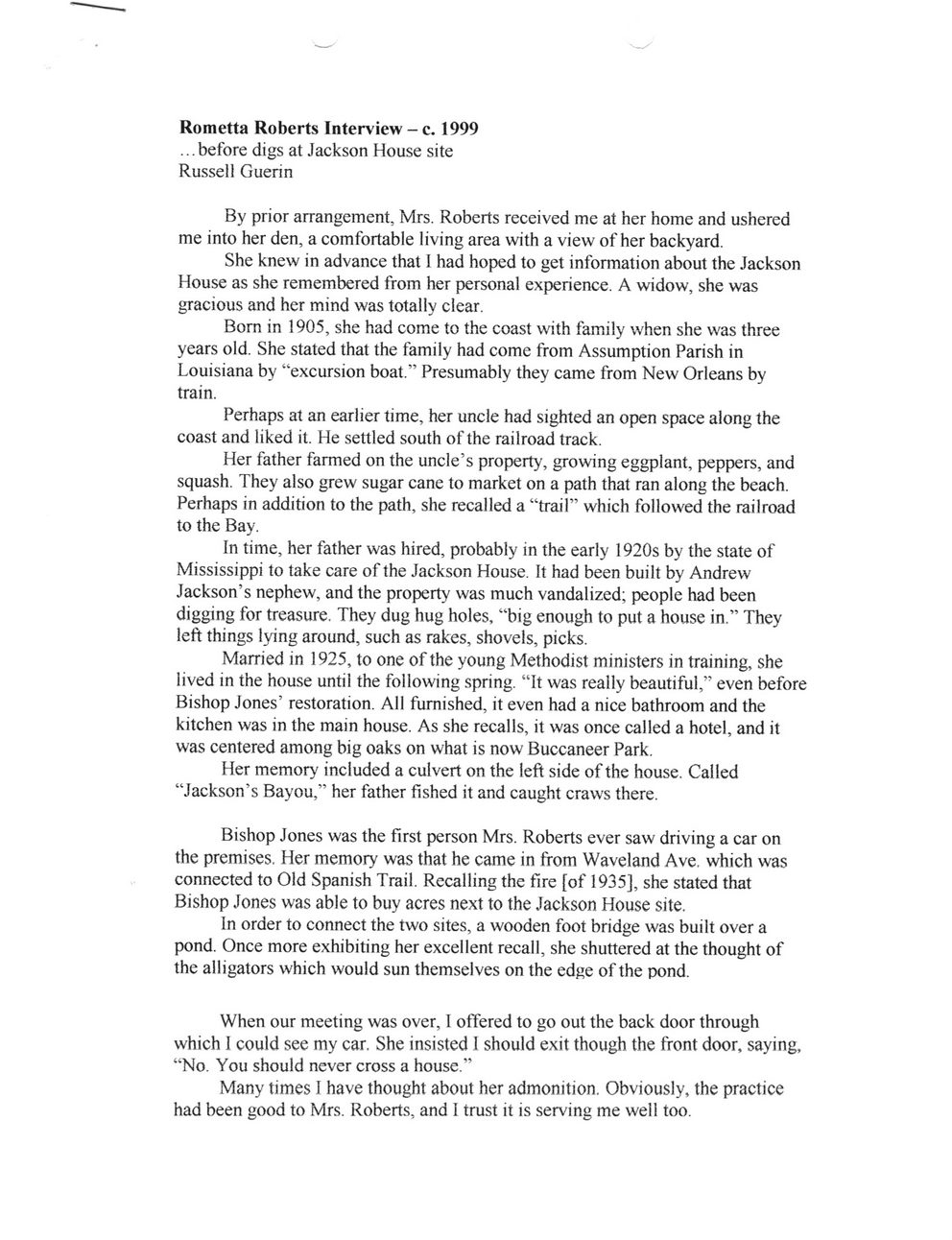This text was obtained via automated optical character recognition.
It has not been edited and may therefore contain several errors.
Rometta Roberts Interview - c. 1999 ... before digs at Jackson House site Russell Guerin By prior arrangement, Mrs. Roberts received me at her home and ushered me into her den, a comfortable living area with a view of her backyard. She knew in advance that I had hoped to get information about the Jackson House as she remembered from her personal experience. A widow, she was gracious and her mind was totally clear. Bom in 1905, she had come to the coast with family when she was three years old. She stated that the family had come from Assumption Parish in Louisiana by “excursion boat.” Presumably they came from New Orleans by train. Perhaps at an earlier time, her uncle had sighted an open space along the coast and liked it. He settled south of the railroad track. Her father farmed on the uncle’s property, growing eggplant, peppers, and squash. They also grew sugar cane to market on a path that ran along the beach. Perhaps in addition to the path, she recalled a “trail” which followed the railroad to the Bay. In time, her father was hired, probably in the early 1920s by the state of Mississippi to take care of the Jackson House. It had been built by Andrew Jackson’s nephew, and the property was much vandalized; people had been digging for treasure. They dug hug holes, “big enough to put a house in.” They left things lying around, such as rakes, shovels, picks. Married in 1925, to one of the young Methodist ministers in training, she lived in the house until the following spring. “It was really beautiful,” even before Bishop Jones’ restoration. All furnished, it even had a nice bathroom and the kitchen was in the main house. As she recalls, it was once called a hotel, and it was centered among big oaks on what is now Buccaneer Park. Her memory included a culvert on the left side of the house. Called “Jackson’s Bayou,” her father fished it and caught craws there. Bishop Jones was the first person Mrs. Roberts ever saw driving a car on the premises. Her memory was that he came in from Waveland Ave. which was connected to Old Spanish Trail. Recalling the fire [of 1935], she stated that Bishop Jones was able to buy acres next to the Jackson House site. In order to connect the two sites, a wooden foot bridge was built over a pond. Once more exhibiting her excellent recall, she shuttered at the thought of the alligators which would sun themselves on the edge of the pond. When our meeting was over, I offered to go out the back door through which 1 could see my car. She insisted I should exit though the front door, saying, “No. You should never cross a house.” Many times I have thought about her admonition. Obviously, the practice had been good to Mrs. Roberts, and I trust it is serving me well too.

Gulfside Methodist Assembly Rometta-Roberts-interview